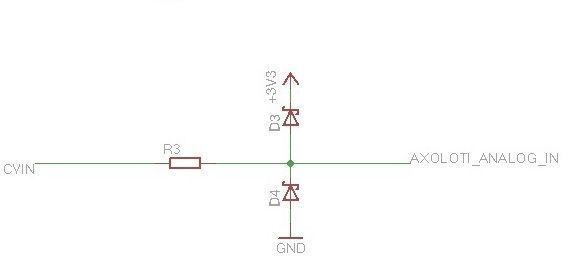Hello everybody,
first post here in the forum after looking around for some weeks and reading lots of articles.
Loving the Forum, loving Axoloti!! Great job Johannes!
Anyways, I was wondering what the best way would be to protect the analogue ins from high currents.
I am currently in the process of building an enclosure with pots and some IO jacks. The plan is to use Axoloti as a standalone instrument as well as with my Eurorack system. I want to send CV back an forth between the modular and Axoloti.
I found lots of schematics for op amp circuits to convert the voltages. However I have quite a few Eurorack utility modules already where I can amplify, scale, offset and invert CV signals in every possible way in order to get something useful. So I don't feel the need to build another op amp circuit.
However I'd like to protect my GPIOs and Axoloti from accidentally sending in an unscaled signal like +10V or +/-5V. From my understanding that could really damage the Axoloti Core board, right?
Would a simple circuit with an input resistor and a couple of shottky diodes (bat 48 for example?) be able to protect the board? Like this one:
If yes: Do I need to connect the +3V3 to the VDDA, VDDC or VDD?
Last question: Is it possible/ necessary to protect an analogue GPIO output as well?
Thanks in advance for any help and comments.
Happy Monday to you all!!
